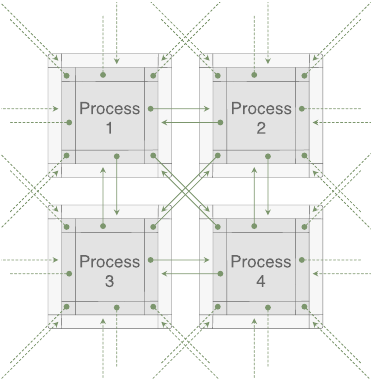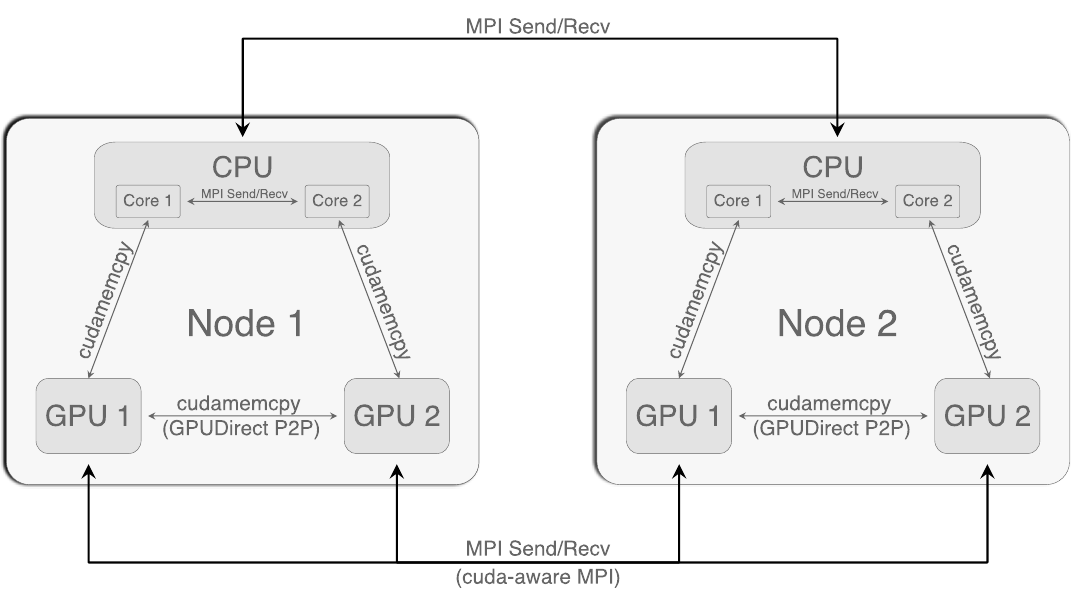Communication
All classes related to communication can be found in
src/base/communication
To work with multiple devices, SIMULATeQCD splits a lattice into multiple sublattices, with partitioning possible along any space-time direction. Each sublattice is given to a single GPU, and we call this sublattice the bulk. In addition, the GPU holds a copy of the outermost borders of neighboring sublattices, which we call the halo. This halo is necessary because many measurement and update processes are stencil operations, which means that a calculation performed at some site may need information from a neighboring sublattice. Every so often, information from all sublattices must be injected into their neighbors’ halos. A schematic drawing of the exchange of halo information between different GPUs is shown below.

CommunicationBase
Communication between multiple CPUs and multiple nodes is handled with MPI, which also allows for communication between multiple GPUs. We use MPI two-sided communication. For NVIDIA hardware, we handle communication between GPUs on the same node using CUDA GPUDirect P2P. CUDA-aware MPI is used for internode communication. We boost performance by allowing the code to carry out certain computations while communicating, such as copying halo buffers into the bulk, whenever possible. An example of what different communication channels might be available for two nodes is given below.
Wrappers for methods used in these various communication libraries are collected in
the CommunicationBase class. The CommunicationBase will also detect whether
CUDA-aware MPI or GPUDirect P2P are available, and if they are, use them
automatically since these channels have less communication overhead than standard MPI,
and are hence much faster.

HaloOffsetInfo and neighborInfo
Halo communication proceeds by first copying halo information contiguously into a buffer.
This requires translating from the sublattice’s indexing scheme to the buffer’s indexing
scheme; the difference between these schemes is called the halo offset,
computed by haloOffsetInfo class.
This class provides offsets for different halo segments
(stripe halo, corner halo, etc). These offsets and the buffer
base pointer are used to place the halo data at the correct position in the buffer.
An example for the corner halo would be:
\( \text{corner buffer pointer} = \text{buffer base pointer} + \text{corner halo offset}. \)
In order to communicate, each sublattice needs to know something about his neighbors,
for example their rank or whether they are on the same node. This information is
kept in the neighborInfo class.
SiteComm
The SiteComm class is the highest level class from which all objects that need to
communicate across sublattices, such as the Gaugefield
inherit. It uses the Memorymanagement
to allocate memory for the buffer,
uses the haloOffsetInfo to translate the local index to the buffer index,
copies information into the buffer, and finally uses the CommunicateBase to
carry out the exchange.